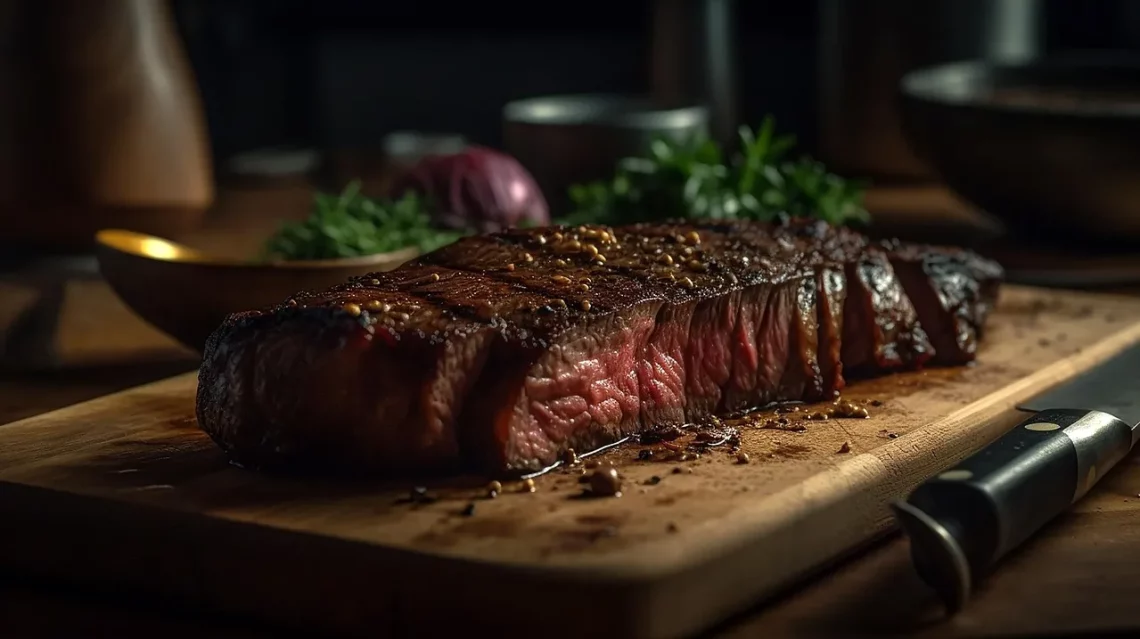
The Ultimate Guide to Using a Dry Aging Cabinet for Perfect Steaks
The art of dry aging beef has captivated chefs and food enthusiasts alike, drawing attention to a technique that enhances the flavors and tenderness of one of the most beloved cuts of meat: steak. This ancient method, which involves allowing beef to age in a controlled environment, has seen a resurgence in popularity among home cooks looking to elevate their culinary skills. The process not only improves the texture and concentration of flavors but also introduces a depth that fresh cuts simply cannot replicate.
A dry aging cabinet serves as the perfect tool for those who want to master this technique at home. Unlike traditional aging methods that require specialized environments, these cabinets are designed to provide the ideal conditions for dry aging, making it accessible to anyone with a passion for cooking. With precise temperature controls, humidity management, and air circulation, a dry aging cabinet creates an environment that mimics the aging process of high-end steakhouses, allowing you to enjoy restaurant-quality steaks in the comfort of your own kitchen.
As you embark on this journey of flavor and texture enhancement, understanding the nuances of the dry aging process will empower you to create steaks that are not just meals but experiences.
Understanding the Dry Aging Process
To truly appreciate the art of dry aging, it’s essential to understand the science behind the process. Dry aging involves the storage of beef in a controlled environment where moisture is allowed to evaporate from the meat. This evaporation concentrates the beef’s flavor, enhancing its umami profile. The process also allows natural enzymes in the meat to break down muscle fibers, resulting in a more tender texture.
Typically, dry aging occurs in a dedicated space for a period ranging from a few weeks to several months, depending on the desired intensity of flavor and tenderness. During this time, the outer layer of the beef develops a hard crust that protects the inner meat from spoilage. This crust is later trimmed away before cooking, revealing the rich, flavorful steak inside.
Temperature and humidity are critical factors in the dry aging process. The ideal temperature for aging beef is between 34°F and 38°F, while humidity levels should be maintained at around 80%. This balance prevents spoilage while promoting the evaporation of moisture. Proper air circulation is also vital, as it aids in the development of the crust and helps to prevent bacteria growth.
It’s important to note that not all cuts of beef are suitable for dry aging. The best candidates are larger cuts, such as whole ribeye or strip loin, which have enough surface area to form a protective crust while still providing a substantial amount of meat to enjoy after aging.
Setting Up Your Dry Aging Cabinet
Investing in a dry aging cabinet is a significant step towards achieving perfect steaks at home. When setting up your cabinet, consider several key features that will ensure optimal aging conditions. First, look for a cabinet with precise temperature and humidity controls. Many models come equipped with digital displays that allow you to monitor and adjust the environment easily.
Next, ensure that your cabinet includes proper air circulation mechanisms. This can often be achieved through built-in fans that help distribute air evenly throughout the cabinet, preventing hotspots and ensuring consistent aging. Additionally, some cabinets come with UV lights to help inhibit bacterial growth, providing an extra layer of safety for your meat.
Once you’ve set up the cabinet, it’s essential to precondition it before placing any meat inside. This involves running the cabinet at the desired temperature and humidity levels for a few days to ensure stability. After preconditioning, you can prepare your chosen cut of beef for aging.
When ready to age, wrap the meat loosely in cheesecloth or butcher paper. This allows moisture to escape while still protecting the meat from contaminants. Place the wrapped meat on a rack inside the cabinet, ensuring there’s enough space around it for air to circulate freely.
Regularly check the temperature and humidity levels throughout the aging process, making adjustments as necessary. Depending on your preferences, you can age your beef for a minimum of 21 days or up to 90 days for a more intense flavor profile.
Trimming and Cooking Your Aged Steak
After the aging process is complete, the next step is trimming and preparing your steak for cooking. When you first remove the meat from the dry aging cabinet, you’ll notice a hard, dried-out exterior. This crust is a natural part of the aging process and must be trimmed away to reveal the tender, flavorful meat inside.
Using a sharp knife, carefully cut off the outer layer of the beef, being cautious not to remove too much of the inner meat. The goal is to remove any dried or discolored areas while preserving as much of the tender interior as possible. Once trimmed, your steak is ready for cooking.
Cooking dry-aged steak requires a slightly different approach compared to fresh cuts. Due to the moisture loss during aging, dry-aged beef tends to cook faster and can dry out if not monitored closely. It’s recommended to cook the steak at a high temperature, either through grilling or pan-searing, to achieve a perfect crust while keeping the inside juicy and tender.
For optimal results, let your steak rest at room temperature for about 30 minutes before cooking. This helps to ensure even cooking throughout. Season generously with salt and pepper, allowing the natural flavors of the dry-aged beef to shine. Cooking times will vary depending on thickness and desired doneness, so using a meat thermometer can help achieve the perfect result.
Once cooked to your liking, allow the steak to rest for a few minutes before slicing. This resting period allows the juices to redistribute, ensuring every bite is full of flavor and tenderness.
Enhancing Your Dry Aging Experience
To take your dry aging experience to the next level, consider experimenting with different cuts of meat, aging times, and even flavor infusions. Each cut will offer a unique taste profile, and varying the aging duration can lead to different levels of tenderness and flavor intensity.
You might also explore adding herbs or spices to your aging process. Some enthusiasts place herbs like rosemary or thyme in the cabinet alongside the meat to impart subtle flavor notes. Just be mindful of how these additions might affect the environment inside the cabinet, ensuring that moisture levels remain stable.
Moreover, keep a journal of your aging experiments. Documenting the cut, the aging time, and the cooking method allows you to refine your process and discover what combinations yield the best results. This practice can also help you develop your palate, as you become more attuned to the nuances of flavor and texture in dry-aged beef.
Lastly, consider sharing your culinary creations with friends and family. Hosting a steak night where you serve your dry-aged masterpieces can be a delightful way to showcase your skills and enjoy the fruits of your labor.
In conclusion, mastering the art of dry aging beef can transform your home cooking experience, allowing you to create restaurant-quality steaks that are full of flavor and tenderness. With the right tools, a little patience, and a commitment to quality, you’ll be well on your way to becoming a dry aging expert.
**Disclaimer:** This article is for informational purposes only and does not constitute medical advice. Always consult a healthcare professional for any health-related issues or concerns.




